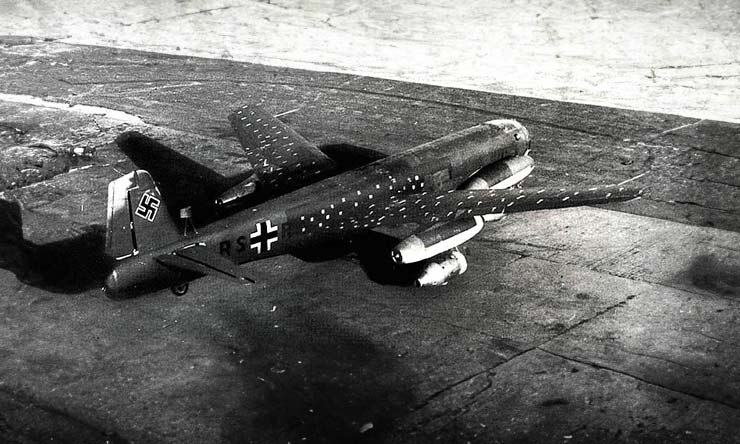The Ju 287, a pioneering jet bomber with forward-swept wings, showcased innovative aerodynamics, designed for high speed and heavy payload capacity in WWII.
The Junkers Ju 287 was a groundbreaking German jet-powered bomber developed during WWII. Its design was ahead of its time, featuring forward-swept wings and high-speed capabilities. This article explores the aircraft’s development history, innovative design, performance characteristics, military use, and its influence on future aircraft design.
The Junkers Ju 287 was a testament to innovative aircraft design during a period of rapid technological advancement in WWII. Intended as a high-speed, heavy bomber, it pushed the boundaries of aerodynamics and jet propulsion.
History of the Development of the Junkers Ju 287
Developed in the latter stages of WWII, the Ju 287 was a response to Germany’s growing need for an advanced bomber capable of penetrating enemy defenses at high speeds. The project, initiated by Junkers under the leadership of Professor Hans Wocke, sought to exploit the benefits of jet propulsion and advanced aerodynamics.
The program was launched amidst the challenging conditions of late-war Germany, with resources and time in short supply. Despite these challenges, the Ju 287 represented a significant leap in bomber design. Its first flight occurred on August 16, 1944, demonstrating the potential of its forward-swept wing design.
Design of the Junkers Ju 287
The Ju 287’s design was revolutionary for its time. It featured forward-swept wings, measuring a wingspan of 65 feet 7 inches (20 meters). This design choice significantly reduced the risk of stall at high angles of attack, improving lift and maneuverability.
The aircraft’s length was 59 feet 0.5 inches (18 meters), and it utilized a mixture of materials, including metals and composites, to balance durability with weight reduction. The forward-swept wing configuration was a radical departure from conventional designs, providing advantages in stability and control at high speeds but also posed challenges in structural integrity and construction complexity.

Performance of the Junkers Ju 287
Powered by four Junkers Jumo 004 turbojet engines, each producing 1,980 lbs of thrust, the Ju 287 was designed for high-speed bombing runs. It could reach speeds of up to 342 mph (550 km/h), with a service ceiling of 29,528 feet (9,000 meters) and a range of 1,243 miles (2,000 km).
When compared to contemporaries like the Boeing B-29 Superfortress, the Ju 287 showcased superior speed and a groundbreaking aerodynamic design, though it lagged in range and payload capacity.
Military Use and Combat of the Junkers Ju 287
The Ju 287 was armed with a formidable payload capacity, intended for strategic bombing roles. However, due to the war’s end and the project’s experimental nature, it never saw combat or operational use.
The aircraft did not enter mass production nor was it sold to other countries. Its developmental lineage ended with the war, but its innovative design influenced future aircraft development, particularly in jet bomber and forward-swept wing technology.
The Junkers Ju 287 was a remarkable leap in aircraft design during WWII, embodying the cutting-edge technological advancements of its time. Though it never saw combat, its forward-swept wings and jet propulsion paved the way for future developments in military aviation.
Back to the experimental aircraft section.